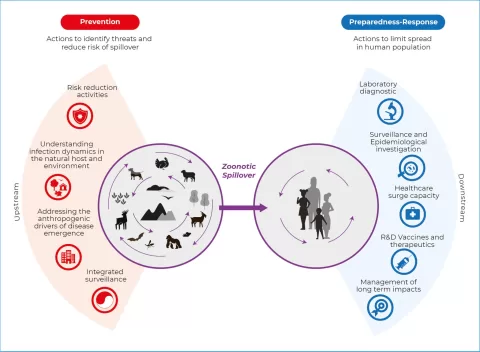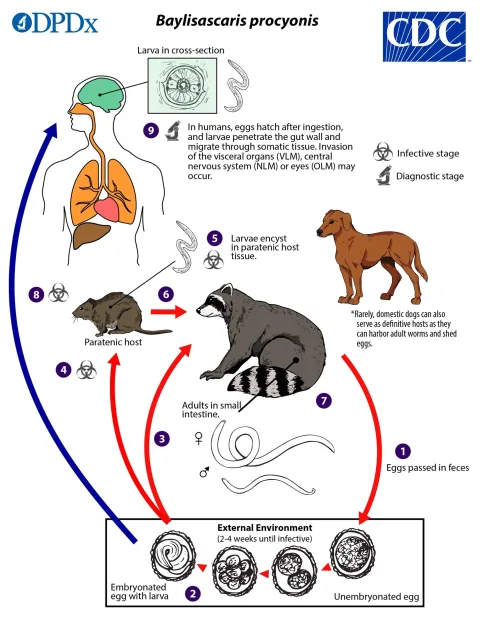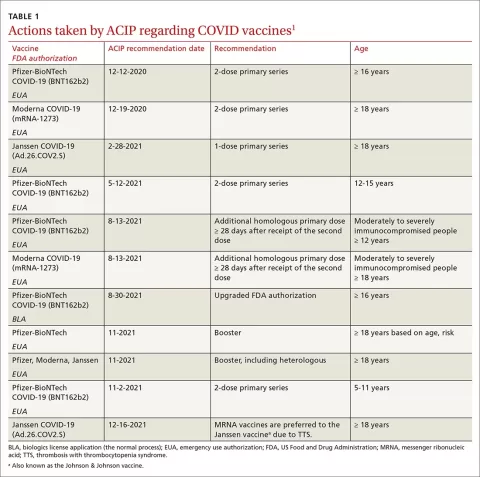The deletions of PfHRP2 and PfHRP3 antigens in Plasmodium falciparum strains present a significant challenge to malaria detection and management efforts, particularly in Ethiopia. Such genomic alterations have been documented to influence the reliability of malaria rapid tests, which predominantly rely on the presence of the PfHRP2 antigen for accurate diagnosis. With emerging data highlighting the prevalence of PfHRP2 antigen deletion, specifically in regions like Jimma, the concern of false negatives throbs in the context of ongoing malaria control initiatives. This underscores the urgent need for genomic surveillance in malaria research and testing frameworks, as strains lacking these antigens can evade detection, complicating treatment strategies. Understanding and addressing PfHRP2 and PfHRP3 deletions is crucial not only for enhancing diagnostic accuracy but also for safeguarding public health against the pervasive threat of malaria.
Malaria detection faces unprecedented challenges owing to the genetic alterations observed in key antigens associated with Plasmodium falciparum. Specifically, the loss of the PfHRP2 and PfHRP3 proteins has raised alarms about the efficacy of rapid diagnostic tests commonly employed in regions heavily affected by malaria, such as Ethiopia. Reports indicate that certain strains of the parasite may be devoid of these crucial antigens, disrupting the accuracy of tests designed to identify infections. As the fight against malaria intensifies, understanding the implications of PfHRP2 antigen deletion and the associated genomic dynamics becomes paramount. Insights gained from genomic surveillance of these deletions could inform future interventions and diagnostic improvements to combat the ongoing malaria threat.
Understanding PfHRP2 and PfHRP3 Deletions in Malaria
PfHRP2 (Plasmodium falciparum histidine-rich protein 2) and PfHRP3 are antigens that are integral to the accuracy of malaria rapid tests. The deletion of these proteins in certain strains of Plasmodium falciparum complicates diagnostic efforts, leading to false negative results—a significant concern in malaria-endemic regions like Ethiopia. In our study, we investigated the prevalence of pfhrp2 and pfhrp3 deletions and highlighted their significant impact on malaria detection. This knowledge is essential for healthcare providers relying on rapid diagnostic tests for timely and effective treatment.
In particular, the genomic surveillance of pfhrp2 and pfhrp3 deletions is critical as it allows us to track evolutionary changes in malaria parasites. Such insights can inform strategies for combating malaria transmission, especially as the disease continues to evolve. Ongoing monitoring helps to ensure that the rapid diagnostic tests employed remain reliable, safeguarding public health against the increasing challenge posed by PfHRP2-deficient strains.
The Impact of PfHRP2 and PfHRP3 Deletions on Malaria Rapid Tests
The reliance on PfHRP2-based rapid diagnostic tests (RDTs) plays a crucial role in malaria diagnosis and management. When strains of Plasmodium falciparum delete the pfhrp2 gene, these tests may fail to detect the presence of the parasite, even when the patient is infected. Our research in Ethiopia demonstrates a concerning prevalence of pfhrp3 deletions, which further compounds this issue. This indicates a growing risk of inaccurate testing outcomes, which can lead to misdiagnosis and improper treatment.
Understanding the geographical concentration of these deletions, particularly in regions like Jimma, is vital for reallocating resources and adapting diagnostic protocols in areas prone to misleading test results. The presence of pfhrp2 and pfhrp3 deletions could essentially undermine years of progress in malaria control and elimination. Hence, it is pivotal for public health authorities to incorporate assessments of these deletions into their strategies to validate the effectiveness of rapid diagnostic tests.
Genomic Surveillance of Malaria in Ethiopia: A Critical Approach
Genomic surveillance of Plasmodium falciparum in Ethiopia is a key element in understanding malaria transmission dynamics. Our study utilized quantitative PCR techniques to identify strains with pfhrp2 and pfhrp3 deletions, revealing a 2.7% prevalence for both deletions collectively. This data is crucial for public health officials, as it provides an early warning about shifting patterns in malaria epidemiology and informs necessary updates in testing protocols.
Moreover, ongoing genomic surveillance allows for tracking of genetic changes in malaria parasites. This surveillance ensures that diagnostic methods evolve alongside these changes, minimizing the risk of false negatives and enhancing patient management. As the landscape of malaria continues to develop due to environmental and genetic factors, robust surveillance systems will remain essential for effective disease control.
Strategies for Adapting Malaria Diagnostic Approaches
As evidence mounts regarding the prevalence of PfHRP2 and PfHRP3 deletions, it becomes increasingly important to adapt malaria diagnostic approaches. Traditional RDTs, while effective in many cases, require adjustments to accommodate the genetic variations present in local P. falciparum populations. Incorporating molecular diagnostic techniques into routine practices can greatly improve detection rates in regions affected by deletions.
Furthermore, developing RDTs that can detect alternative markers when pfhrp2 is absent will help mitigate the risks presented by these genetic deletions. By innovating our diagnostic tools and actively monitoring local malaria strains, we can enhance treatment regimens and maximize the effectiveness of malaria interventions.
Malaria Control Efforts and the Role of Antigen Deletions
Malaria control efforts in Ethiopia remain heavily reliant on the use of rapid diagnostic tests that target PfHRP2. However, the detection of pfhrp2 and pfhrp3 deletions signifies an urgent need to reassess these strategies. The effectiveness of malaria control programs depends on timely and accurate diagnosis; therefore, understanding the implications of these deletions is critical for future initiatives.
In light of these findings, it is imperative that malaria control programs integrate findings on antigen deletions into their frameworks. Continued emphasis on scientific research will empower health authorities to modify and improve diagnostic tools, ensuring that they fit the evolving malaria landscape while preserving the lives of those at risk of this deadly disease.
The Health Implications of PfHRP2 and PfHRP3 Deletions
The health implications of PfHRP2 and PfHRP3 deletions are profound, especially in the context of malaria diagnosis and treatment outcomes. When diagnostic tests fail due to these genetic deletions, it can result in a cascade of negative consequences, including untreated infections and increased transmission rates. For healthcare systems operating in malaria-endemic regions, such as Ethiopia, these challenges signify a potential public health crisis.
As we expand our understanding of these antigen deletions, it is crucial for healthcare providers to recognize the urgency of timely modification of their diagnostic methods. These adjustments will not only enhance test accuracy but also strengthen the overall malaria response strategy, ensuring better health outcomes and ultimately saving lives.
The Role of Public Health Education in Malaria Management
Public health education plays a vital role in managing the threat posed by PfHRP2 and PfHRP3 deletions. By informing communities about the implications of these deletions and the importance of accurate malaria testing, health authorities can foster more informed populations. This initiative can motivate individuals to seek proper testing and treatment, thereby improving overall healthcare adherence.
Additionally, educating healthcare workers about the limitations of existing rapid diagnostic tests in the presence of antigen deletions enables better health-seeking behavior among patients. Increased awareness can lead to a more vigilant public, empowering them to act promptly when malaria symptoms arise, thus mitigating the potential spread of the disease.
Innovations in Malaria Diagnostics Amidst Genetic Challenges
Innovation in malaria diagnostics is essential in the face of genetic challenges such as PfHRP2 and PfHRP3 deletions. Advances in detection technology, such as the use of next-generation sequencing and polymerase chain reaction (PCR) assays, offer promising alternatives to traditional RDTs. These methodologies enable more accurate and sensitive detection of malaria, even in the presence of deletions, ensuring that healthcare providers can make informed treatment decisions.
Consequently, investing in research and development for diagnostic innovations not only holds potential for improved detection rates but also promotes resilience in health systems against emerging malaria strains. Such advancements will be crucial in adapting to the constantly evolving landscape posed by Plasmodium falciparum and its variant forms.
Future Directions in Malaria Research and Control
The future of malaria research and control hinges on our ability to adapt quickly to the evolving genomic landscape of Plasmodium falciparum. Continued studies on pfhrp2 and pfhrp3 deletions will be critical for shaping future diagnostic approaches and treatment strategies. Collaborative efforts among researchers, healthcare providers, and policymakers are essential to fostering innovations that will improve the accuracy and effectiveness of malaria diagnostics.
Looking ahead, increasing investment in genomic surveillance and molecular diagnostics will bolster our defenses against malaria. Furthermore, integrating these findings into public health strategies and interventions will be key to mitigating the impact of antigen deletions and, ultimately, controlling malaria transmission effectively.
Frequently Asked Questions
What are PfHRP2 and PfHRP3 deletions in Plasmodium falciparum?
PfHRP2 and PfHRP3 deletions refer to the genetic loss of specific antigens in the malaria-causing parasite Plasmodium falciparum. These deletions can impair the effectiveness of malaria rapid tests, which typically rely on detecting these proteins to confirm infection.
Why are PfHRP2 and PfHRP3 deletions significant for malaria rapid tests?
The significance lies in the fact that rapid diagnostic tests (RDTs) often use PfHRP2 as a biomarker for malaria detection. When PfHRP2 or PfHRP3 is deleted, these tests may yield false negative results, compromising patient diagnosis and treatment.
How prevalent are PfHRP2 and PfHRP3 deletions in Ethiopia’s Plasmodium falciparum strains?
In a study analyzing samples from Ethiopia in 2009, pfhrp2 and pfhrp3 deletions were found with a prevalence of 2.7% for both deletions combined, although pfhrp2 deletions were absent in the sample. However, there was a concerning prevalence of 28.4% for pfhrp3 deletions alone.
What does the emergence of PfHRP2 antigen deletion indicate for malaria surveillance in Ethiopia?
The emergence of PfHRP2 antigen deletion indicates a critical need for ongoing genomic surveillance in Ethiopia, as it threatens the reliability of malaria rapid tests and necessitates adjustments in diagnostic approaches and treatment protocols.
What regions in Ethiopia show a higher prevalence of PfHRP3 deletions?
The southwestern region of Jimma in Ethiopia showed a higher concentration of pfhrp3 deletions, suggesting geographical patterns in the prevalence of these genetic mutations among Plasmodium falciparum strains.
How can the findings about PfHRP2 and PfHRP3 deletions impact malaria treatment strategies?
Findings regarding PfHRP2 and PfHRP3 deletions can significantly impact treatment strategies by necessitating alternative diagnostic methods that do not solely rely on PfHRP2, ensuring accurate detection and effective management of malaria cases.
What research methods were used to identify PfHRP2 and PfHRP3 deletions in the study?
The study utilized 4-plex quantitative PCR (qPCR) on previously confirmed monoinfection cases of Plasmodium falciparum to identify the presence of PfHRP2 and PfHRP3 deletions among the samples collected in Ethiopia.
| Key Points | Details |
|---|---|
| Study Focus | Investigation of PfHRP2 and PfHRP3 deletions in Plasmodium falciparum strains in Ethiopia. |
| Impact on Rapid Tests | Deletions of these antigens compromise the reliability of PfHRP2-based rapid diagnostic tests for malaria. |
| Geographic Findings | Higher prevalence of pfhrp3 deletions found in Jimma, southwestern Ethiopia. |
| Importance of Monitoring | Emphasizes the need for ongoing genomic surveillance of PfHRP2 and PfHRP3 to maintain effective malaria control. |
| Research Method | Used 4-plex quantitative PCR on samples from 2009 to detect deletions in previously confirmed cases. |
Summary
PfHRP2 and PfHRP3 deletions represent a growing challenge for malaria diagnostics and control. The study highlights the emergence of these deletions in Plasmodium falciparum strains within Ethiopia, posing a substantial risk to the efficacy of rapid diagnostic tests. Given the significant prevalence of pfhrp3 deletions, it is imperative for public health initiatives to integrate continuous genomic surveillance of these antigens to adapt malaria diagnostics and treatment, ensuring effective disease management.
The content provided on this blog (e.g., symptom descriptions, health tips, or general advice) is for informational purposes only and is not a substitute for professional medical advice, diagnosis, or treatment. Always seek the guidance of your physician or other qualified healthcare provider with any questions you may have regarding a medical condition. Never disregard professional medical advice or delay seeking it because of something you have read on this website. If you believe you may have a medical emergency, call your doctor or emergency services immediately. Reliance on any information provided by this blog is solely at your own risk.








